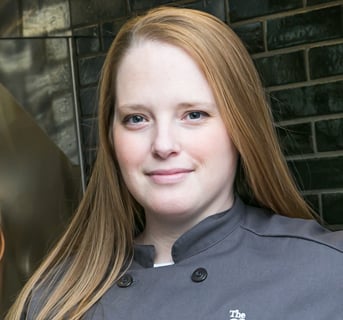Years ago I visited a friend living in Ireland. We spent days bumping down country roads in broken-down buses, drank gallons of cider, and hours drying out our rain-soaked everything. I loved the people and I loved the scenery, but the thing I loved most was the butter. That's right, the butter. In fact, I gained 8 pounds that trip because my diet consisted entirely of beer and things upon which I could spread Kerrygold Irish Butter.
Butter is always better, but not all butter is created equal. Butter can vary in flavor due to the diet of the cows producing the milk, and in fat content due to the way the cream is processed. American butter is typically around 81% butterfat and cultured or European-style butters are 83-86% butterfat. The difference in fat content not only affects the texture and mouthfeel of the butter, it also affects the way the butter bakes, and how it spreads. Butter consists of three primary components: fat, protein, and water. The more fat a butter has, the less water and protein it has; this translates to a more tender and flaky pastries. But hey, forget the numbers, the best way to appreciate the difference is to make some tasty treats. It's scone time.
Currant Scones with Walnuts and Thyme
4 cups all-purpose flour
2 Tbsp baking powder
6 Tbsp granulated sugar
1 tsp salt
10 Tbsp unsalted European-style butter such as Kerrygold or Plugra
1 cup currants
1 cup walnuts, roasted and rough chopped
2 tsp fresh thyme, finely chopped
2 cups heavy cream, plus extra for glazing
1 tsp vanilla bean paste
1. Cut butter into small pieces and place in the freezer to firm up. A bench scraper is a great tool for the job.
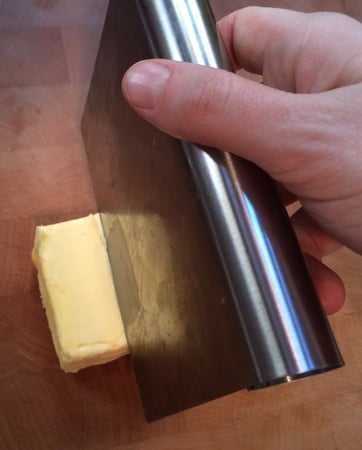 2. Preheat oven to 425 degrees.
2. Preheat oven to 425 degrees.
3. Combine flour, baking powder, sugar, and salt in the bowl of a food processor. Pulse briefly to combine.
4. Distribute chilled butter over the top to the dry mixture. Pulse in short bursts until the mixture looks like coarse meal with a few larger butter pieces.
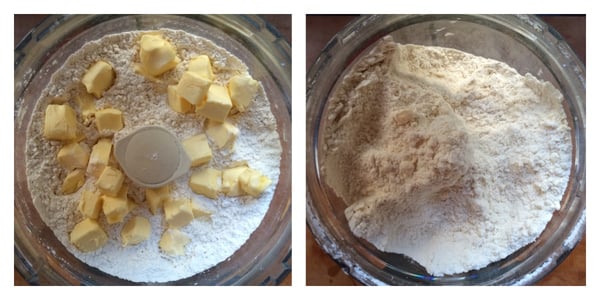 5. Add the currants, walnuts, and thyme. Pulse once to combine.
5. Add the currants, walnuts, and thyme. Pulse once to combine.
6. Transfer the contents of the processor to a large mixing bowl and gently stir in the heavy cream and vanilla until the dough begins to come together. Turn out the dough along with any unincorporated dry ingredients onto your work surface.
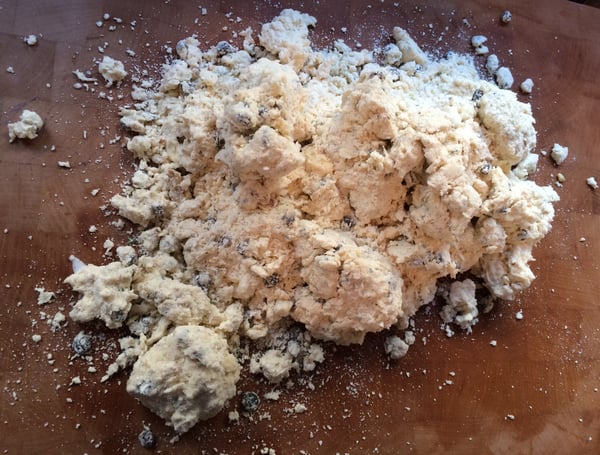 7. Gently press the mixture together to form an approximately 8x8" square. It is important to work the dough as little as possible o that the scones will be tender and not tough. Use a bench scraper to divide the dough into 16 pieces.
7. Gently press the mixture together to form an approximately 8x8" square. It is important to work the dough as little as possible o that the scones will be tender and not tough. Use a bench scraper to divide the dough into 16 pieces.
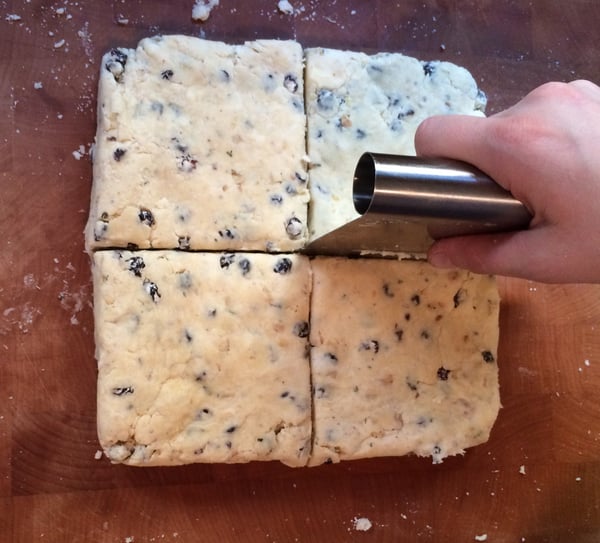 8. Transfer to a parchment or Silpat-lined baking sheet and lightly brush the the top of each scone with cream to promote browning.
8. Transfer to a parchment or Silpat-lined baking sheet and lightly brush the the top of each scone with cream to promote browning.
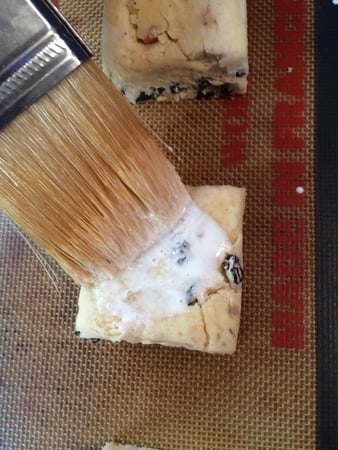 9. Bake until lightly golden on both top and bottom, approximately 20 minutes.
9. Bake until lightly golden on both top and bottom, approximately 20 minutes.
10. Spread with butter and enjoy!
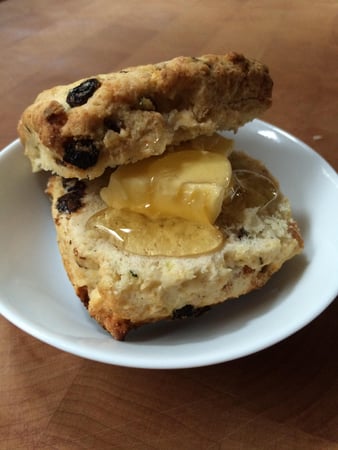 Interested in making your own butter? Check out David's Much Ado About Butter blog post. For more fun ways to indulge in buttery goodness, check out The Chopping Block's Baking 101 class with me coming up at Lincoln Square on January 17th.
Interested in making your own butter? Check out David's Much Ado About Butter blog post. For more fun ways to indulge in buttery goodness, check out The Chopping Block's Baking 101 class with me coming up at Lincoln Square on January 17th.


